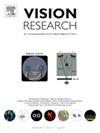假性忽视是否影响瞳孔明暗反应?
IF 1.4
4区 心理学
Q4 NEUROSCIENCES
引用次数: 0
摘要
瞳孔光响应(PLR)受空间注意力分配的调节。左侧明亮刺激时瞳孔收缩较大被认为是假性忽视的表现,这是在神经正常人群中观察到的一种微妙的注意偏差。这项研究旨在利用分屏法(一种新引入的空间注意偏差测量方法)来复制这种效果,同时通过记录两个瞳孔的情况来考虑诸如收缩异视等因素。此外,我们引入了有和没有竞争刺激的条件(在原始白色斑块的对面有一个黑色斑块,应该引起瞳孔收缩)来研究视觉竞争在PLR调制中的作用,并探讨了瞳孔暗反应(PDR)来评估注意偏差是否影响瞳孔扩张。与我们的假设相反,我们没有观察到明显的伪忽略效应,因为瞳孔收缩并不总是在左侧刺激下更大。我们发现了收缩异向性的明确证据,即同侧刺激比对侧刺激产生更强的收缩,因此强调了在未来研究中考虑这种生理效应的必要性。关于PDR,我们没有发现显著的注意力调节或扩张性异视的证据,因为瞳孔扩张性振幅在两个半球是相似的。这些发现表明,尽管分屏方法可能揭示生理不对称,如异色,但其对神经正常人群注意偏差的敏感性仍需要进一步研究。本文章由计算机程序翻译,如有差异,请以英文原文为准。
Does pseudoneglect influence pupillary light or dark response?
Pupillary light response (PLR) is modulated by the allocation of spatial attention. Larger pupil constrictions for bright stimuli presented on the left side are considered indicative of pseudoneglect, a subtle attentional bias observed in neurotypical populations. This study aimed to replicate this effect using the split-screen method—a newly introduced measure of spatial attentional bias—while accounting for factors such as contraction anisocoria by recording from both pupils. Additionally, we introduced conditions with and without competing stimuli (a black patch on the opposite side to the original white patch that is supposed to elicit pupil contraction) to investigate the role of visual competition in PLR modulation and explored the pupillary dark response (PDR) to assess whether attentional biases affect pupil dilation. Contrary to our hypothesis, we did not observe a significant pseudoneglect effect, as pupil constriction was not consistently greater for left-sided stimuli. We found clear evidence for contraction anisocoria, whereby ipsilateral stimuli produce stronger constrictions than contralateral stimuli, thus highlighting the need to account for this physiological effect in future studies. Regarding PDR, we did not find significant attentional modulation or evidence of dilation anisocoria as pupil dilation amplitudes were similar across both hemifields. These findings suggest that although the split-screen method may reveal physiological asymmetries like anisocoria, its sensitivity to attentional biases in neurotypical populations still requires further investigation.
求助全文
通过发布文献求助,成功后即可免费获取论文全文。
去求助
来源期刊

Vision Research
医学-神经科学
CiteScore
3.70
自引率
16.70%
发文量
111
审稿时长
66 days
期刊介绍:
Vision Research is a journal devoted to the functional aspects of human, vertebrate and invertebrate vision and publishes experimental and observational studies, reviews, and theoretical and computational analyses. Vision Research also publishes clinical studies relevant to normal visual function and basic research relevant to visual dysfunction or its clinical investigation. Functional aspects of vision is interpreted broadly, ranging from molecular and cellular function to perception and behavior. Detailed descriptions are encouraged but enough introductory background should be included for non-specialists. Theoretical and computational papers should give a sense of order to the facts or point to new verifiable observations. Papers dealing with questions in the history of vision science should stress the development of ideas in the field.
 求助内容:
求助内容: 应助结果提醒方式:
应助结果提醒方式:


